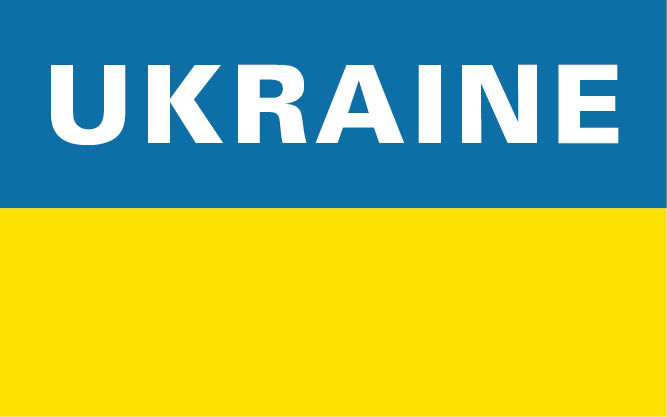Kennan Cable No. 79: Russia is Looting Ukraine’s Breadbasket…Again

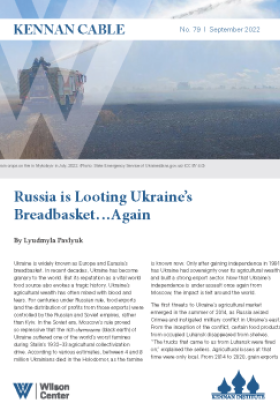
Ukraine is widely known as Europe and Eurasia’s breadbasket. In recent decades, Ukraine has become granary to the world. But its reputation as a vital world food source also evokes a tragic history. Ukraine’s agricultural wealth has often mixed with blood and tears. For centuries under Russian rule, food exports (and the distribution of profits from those exports) were controlled by the Russian and Soviet empires, rather than Kyiv. In the Soviet era, Moscow’s rule proved so repressive that the rich chernozems (black earth) of Ukraine suffered one of the world’s worst famines during Stalin’s 1932–33 agricultural collectivization drive. According to various estimates, between 4 and 8 million Ukrainians died in the Holodomor, as the famine is known now. Only after gaining independence in 1991 has Ukraine had sovereignty over its agricultural wealth and built a strong export sector. Now that Ukraine’s independence is under assault once again from Moscow, the impact is felt around the world.
The first threats to Ukraine’s agricultural market emerged in the summer of 2014, as Russia seized Crimea and instigated military conflict in Ukraine’s east. From the inception of the conflict, certain food products from occupied Luhansk disappeared from shelves. "The trucks that came to us from Luhansk were fired on," explained the sellers. Agricultural losses at that time were only local. From 2014 to 2020, grain exports from Ukraine increased by 76 percent.[1] Between 2019 and 2021, according to the website of the Verkhovna Rada Committee on agrarian policy, Ukraine accounted for 10 percent of the world’s wheat exports, 15 percent of corn exports, 15 percent of barley exports, and almost 50 percent of sunflower oil exports.[2]
Russia’s invasion of Ukraine this winter has created an entirely new reality for Ukrainian farmers and their customers. The invasion has shown just how easily Russia could return Ukrainian citizens to the years when their lives were expendable. “We can talk about direct analogies with the Holodomor,” said historian Lyudmyla Hrynevych, director of the National Museum of the Holodomor-Genocide in Kyiv.[3] “The worst analogy is that both in the 1930s and now we are watching the genocidal murder of Ukrainians. It is practically the same process,” she said.
"Occupying Forces Stole Five Ships with Ukrainian Grain in Berdyansk" read a recent news headline in Ukraine.[4] Berdyansk also played a featured role in stories about the Holodomor of 1933. One relayed how starving refugees arriving in Berdyansk in search of bread stood by in crowds at the port and silently watched Ukrainian grain loaded on ships for export. In 1933, there was not a single recorded birth in some districts of present day Zaporizhzhia region. As the snow melted in the spring, survivors in newly organized collective farms (called kolkhozs, or kolhosps, in Ukrainian) had to gather up corpses in the field—just as the bodies of the dead are collected in occupied Mariupol today.[5]
A key aspect of the Holodomor was the Bolshevik policy of dekulakization, a campaign against successful farmers Stalin deemed anti-Soviet nationalists. Eliminating wealthy Ukrainian peasant owners (kulaks, or kurkuls in Ukrainian) through collectivization served both an economic and a political purpose. The Holodomor permanently changed the demographics of Ukraine’s south and east. The millions of Ukrainians killed by famine during the Holodomor (one million of them were kids under 10), followed by extensive migration of ethnic Russians to the region during post-war industrialization, resulted in the predominance of Russian speakers in the region. Putin may portray his special military operation as reclaiming lost lands for a reconstituted Russian empire. Ukrainians see only an effort to repeat past Russian campaigns of terror, atrocity, and genocide.
Russian violence against Ukraine in 2022—against its people and property—have revived historical parallels with Moscow’s manufactured Holodomor of the last century. Is this parallel too strong or overreaching? Not at all. The actions of the Kremlin have the same intent: to expropriate and sweep up Ukrainian territories, while shattering the identity and culture of the inconvenient residents. There is even an analogue to Stalin’s past deportations to Siberia, with Russian filtration camps and the evacuation of hundreds of thousands of Ukrainians to the Russian territory. Many of them are children who have been placed in re-education schools to learn how their heritage is a fiction.
Acting on Orders: Russian Looting and Terror
For a couple of decades, Russian officials have tried to convince their citizens, and the world, that Ukraine is not a state. What is it, then? The war against Ukraine has demonstrated that Russia perceives Ukraine exclusively as a resource. A resource that Kyiv can either surrender willingly or have taken by force. This mindset has filtered down to individual Russian soldiers, who look at Ukraine as a territory designated for their plunder. From the first days of the invasion, the "resource approach" was implemented on an individual level. Soldiers looted en masse and sent tons of stolen Ukrainian goods from the border areas to Russia, particularly through the Belarus postal service.[6]
The invaders held lives in no greater regard than property. The calculus of killing in the first occupied territories proved a mixture of fevered ideology and mercenary motives. Any Ukrainian citizen could be killed for being an educator, journalist, or official, since any such background identified a person as a representative of the Ukrainian state and therefore subject to immediate “denazification.”[7] Or perhaps someone’s house looked prosperous—not unlike that of a kulak from the previous century. In such cases, the house was fired upon, the owners killed, and their money and jewelry looted. At the national level, Russia is doing the same thing. It is seizing control of the most important economic assets in Ukraine and disposing of any who try to defend them.
From the outset of the war, the seizure and destruction of food supplies emerged as a distinctive Russian tactic both to control territory and instill terror among local populations. The campaign in both the northern regions, including those adjacent to Kyiv, and in Mariupol proved Russia’s intent to use this tactic.[8] Corridors of supply were closed and volunteers in Bucha and Mariupol carrying food were taken hostage or killed.[9] To survive in their basements, people sometimes shared the last cookies in the house and the milliliters of water left in the heating system pipes. Not everyone survived this diet. Among those who died were well-known elderly artists and World War II survivors.[10]
Myroslava Antonovych, a professor at the Kyiv-Mohyla Academy and head of the Center for Genocide and Human Rights Studies, explains that a key point in understanding the concept of genocide is the deliberateness of the aggressor’s actions: it is “an intentional killing of a group of people.”[11] Rafal Lemkin, who coined the term "genocide," made it clear that genocide is “the extermination not only of individuals, but also of culture and nation." He began his 1953 article “Soviet Genocide in Ukraine” with the assertion that “the destruction of the Ukrainian nation” is “perhaps the classic example of Soviet genocide, its longest and broadest experiment in Russification.”[12] In 2015, the Russian Federation placed Lemkin’s article, with its reference to “the crime of being Ukrainian,” on its federal list of extremist materials.
Russian occupiers, in their tactics and their propaganda, leave no doubt that mass killings and deprivation of food and water for large groups of civilians were and are intentional. Today, this genocide unfolds in many occupied locations in the south and east. In occupied Mariupol, where only 100,000 to 130,000 out of the former population of half a million people remain, the death rate is substantially higher than the pre-invasion period. Thousands of people are held in Russian filtration camps.[13] Communities in the southern oblasts of Kherson, Mykolayiv, and Zaporizhzhia are suffering huge economic and human losses.[14] Wherever Russian soldiers arrive, they knock down the gates and start looting.[15] When they leave, they fire upon the village.[16] Photos on social networks document the striking contrast of “before and after” images of Russian forces occupying villages across the front.
Many farmers are leaving the burned-out settlements. The people remaining behind know they can be killed without notice. Or tanks shell the houses of those who refuse to obey the occupiers’ orders to join Russian-run agricultural enterprises—essentially, a modern version of the Soviet collectivization drive. Taking a page from Ukraine’s darkest history, occupying forces pressure locals to hand crops and machinery over to Russian administrators on command.[17] They are already targeting the next harvest: in Zaporizhzhia, local media report that Ukrainian farmers must enter into exclusive agreements with Russian grain traders.
The artificial food crises under occupation become the genocidal instrument used to oust local residents and make them change their citizenship. When inexpensive and high-quality Ukrainian food disappeared from shelves in the occupied Kherson, it was a prelude to the exchange of livelihoods for loyalty to a new power and preparation for future “referendums.” The occupiers repeated the same trick with mobile communication and the internet in the city: access disappeared, only to reappear in exchange for the acceptance of Russian passports. “It seems that they are going to turn our region into a zone,” said journalist Iryna Staroselets, who was forced to leave the city due to threats against her pro-Ukrainian position. “What zone? Free from Ukrainians. Where there will be only Russian military bases and territories for harvesting grain. And a small number of people who will serve it.”
Since grain is one of Ukraine’s most valuable assets, events on this front (and it turns out that the "food front" is no longer a metaphor) are unfolding on an increasingly large scale. Throughout the spring, occupiers seized grain from the Kherson region for transport to Crimea. Granaries throughout the occupied zone were demolished.[18] According to representatives of the Luhansk state administration, Russian forces built a new railway to the city of Starobilsk specifically to transport grain back to Russia. In total, a third of the grain reserves from the occupied territories were taken this spring, amounting to half a million tons worth $100 million. According to Ukrainian diplomatic sources, approximately 100,000 tons of wheat were smuggled to Syria by the beginning of June. In August, two hundred thousand tons of grain from the 2022 harvest were stolen and transported to Russia from Luhansk oblast.[19]
Russian troops are deliberately "denazifying" grain storehouses and livestock complexes throughout Ukraine. In June, Russian rockets destroyed Nika Terra, the second largest grain terminal in the country, located in Mykolayiv, an area outside direct reach of the Russian military. The village of Chornobayivka in the Kherson region, formerly the largest poultry farm in Europe, lost four million chickens through hunger and thirst because the feed trucks came under fire and the water supply was blocked. Thousands of farm cows in the occupied zones were shot by tanks, rifles, or artillery. Some farmers in the south, under constant fire, try to sell their herds for a pittance to neighbors from non-occupied zones able to care for them. After all, cows get sick if they cannot graze, and are completely lost if shot in the field. "How can we not expect the Holodomor after that?" indignant Ukrainians write in social media.
In addition to looting food, the occupiers steal agricultural machinery from Ukraine, equipment later found in Russian territory by satellite. In the Kherson region, for example, half of the local technical stock was stolen. What the Russians cannot steal, they destroy. Ukrainian Facebook pages feature photo galleries of blown-up tractors and drills. According to the Ukrainian Ministry of Emergencies, more than 30 million hectares of land, including farmland, in Ukraine need demining.[20] All summer, crops in fields continued to burn after shelling.[21] In several regions, Russian soldiers blew up warehouses containing fertilizers, including ammonium nitrate, causing great damage. Finally, just as it was back in 2014, there have been news reports of soldiers firing on vans carrying bread in the Luhansk region.
When Russian occupiers seized lands in 2014, the consequences were mainly local. Today, the much larger invasion threatens the world.
Russia Offers to Solve a Problem it Created
President Putin reportedly indicated in a conversation with Italian Prime Minister Mario Draghi in late May that he was "ready to take part in overcoming the global food crisis" in exchange for lifting sanctions.[22] Putin benefits from the chaos of food crises that he creates and could potentially also benefit if he can extract concessions for ending them. The Kremlin demands the removal of sanctions and in return offers to unblock channels for grain exports. This is not even trade, but extortion. Common media euphemisms, such as "Russia will help solve the food crisis on the condition that…" or "Putin offers help in resolving the crisis…" are completely off key.
The global implications of blocking Ukraine’s food exports are already evident, as many countries around the world have already experienced difficulties ranging from significant price increases to riots. Given these global imperatives, huge efforts were made recently to at least partially unblock grain exports. However, the first steps in this direction, made under constant Russian rocket attacks, show that sea cargo safety and Russian trustworthiness in negotiations remain open questions.
After both Ukraine and Russia signed separate grain transport agreements in Istanbul with the United Nations and Turkey on July 22, Russia launched missile attacks near Odesa’s grain terminals the next day.[23] It was not the first time that Russia violated a treaty. This case fits the pattern of Russian shelling safe passage corridors for civilians fleeing Mariupol, and of killing dozens of Ukrainian POWs in the Olenivka camp. On July 31, the owner of Ukraine’s giant agricultural firm Nibulon, Olexiy Vadaturskyi, and his wife were killed in Mykolayiv in a massive rocket attack on the city, in which their home may have been targeted.[24] Vadaturskyi’s death was a convenient development in Russia’s violent competition for grain markets, and it serves as a grim message to other successful Ukrainian business owners.
The “fog of war” serves as cover for Russian pillaging and destruction of Ukraine’s economy to serve its own. It also provides the Kremlin with opportunities to extort the world: in exchange for a license to slaughter Ukrainians at will, the Kremlin is offering the gift of salvation from the global famine of its own creation, both now and in the future.
Vladimir Putin, speaking at the Eastern Economic Forum in Vladivostok on September 7, said that Moscow "will have to think about changing routes" for Ukraine’s grain export.[25] Vasily Nebenzya, the ambassador of the Russian Federation to the UN, hinted at the possibility of refusing to renew the grain agreement after November at a UN Security Council meeting on the same day. According to the agreement signed this summer, the grain corridor was set for July 22 to November 19, and renewable upon mutual agreement. Russian officials are now pressing for “grain deals in exchange for lifting the sanctions.”
The problem of grain export from Ukraine is far from a momentary concern. Any recipe for solving this problem through accommodating Russian demands will only deepen the crisis for years to come. In fact, the future of world food security depends in large part on how the world reacts to the Kremlin’s crimes today.
How could Ukraine contribute to preventing world food crises? Andriy Klymenko, the chief editor of the BlackSeaNews site, points to the crucial condition: “The war in the Black Sea must be stopped. Russian warships must be taken to their bases with constant international verification that they are there."[26] Even supervision or guarantees from the UN and Turkey are not enough to protect the existing grain trade deal. The assistance Ukraine needs to ensure safe passage must come in the form of long-range weapons, such as HIMARS (High Mobility Artillery Rocket System), ATACMS (Army TACtical Missile System), and similar advanced systems.
Only substantial support for Ukraine’s independence and sovereignty can ensure its role as reliable producer of agricultural products for the world. Otherwise, all the proposed strategies will remain fragile. This summer, arrangements were made to start grain export using railway routes through Poland and Romania. There have been talks even about building grain terminals in the west of Ukraine. But won’t Russia fire on newly built granaries and on the modes of transport on the western border? Of course it could, if no one stops it.
So-called political realists, ranging from armchair analysts to famous experts, confidently proclaim that Ukraine needs to hand over territory to Putin to save the world from the external consequences of war.[27] Perhaps they consider Ukraine an insignificant state. Yet in the 1990s, the very small state of Kuwait was defended by the United States-led coalition during the war with Iraq. Ukraine may not have oil, like Kuwait. But grain, as it turns out, is quite a valuable product. At the beginning of the Russian aggression, Ukraine asked for international help, believing that it naturally has the right to protection as a state, including the right to preserve the lives of its citizens. If the moral case is insufficient for some, then perhaps the very real prospect of famine in nations dependent on Ukraine’s food exports might be convincing.
Regardless of the realists around the world who propose off-ramp after off-ramp for Russia to end the conflict on favorable terms, Ukrainians know the real stakes. Moscow is repeating the most horrible atrocities from its history towards Ukraine. The Ukrainian people strongly believe, however, that those atrocities will not rise to the level of another Holodomor. Not because they think Russia lacks the will and desire to inflict such a genocidal campaign, but because they have faith that their army and support from allies abroad will prevent it.
[1] Скільки зернових експортує Україна (Infographic—Grain Export from Ukraine). https://www.slovoidilo.ua/2022/02/22/infografika/ekonomika/skilky-zernovyx-eksportuye-ukrayina
[2] Розблокування українських морських портів необхідне для збереження глобальної продовольчої безпеки, Комітет Верховної Ради України з питань аграрної та земельної політики (“Unlocking Ukrainian Seaports Is Necessary to Maintain Global Food Security,” Committee of the Verkhovna Rada of Ukraine on Agrarian and Land Policy).
https://komagropolit.rada.gov.ua/news/main_news/74473.html
[3] Газ, нафта, зерно? Історикиня про те, чому росіяни вивозять з України збіжжя та як Росія може шантажувати світ хлібом, Новини, Українське радіо, nrcu.gov.ua (“Gas, Oil, Grain? Historian on Why Russians Steal Grain from Ukraine and How Russia Can Extort the World Using Bread”). http://www.nrcu.gov.ua/news.html?newsID=98681
[4] Окупанти викрали з порту Бердянська 5 кораблів із зерном, глава ОВА, Новости Kontrakty.ua (“Occupiers Stole Five Ships with Grain from the Port of Berdyansk,” head of regional military administration). https://kontrakty.ua/article/194545
[5] В Мариуполе «заработал» Центр занятости. Оккупанты предлагают собирать тела погибших на улицах, DonPress.com (“Employment Center Started Its “Work» in Mariupol. Occupiers Offer to Collect the Bodies of the Dead on the Streets”). https://donpress.com/news/10-05-2022-v-mariupole-zarabotal-centr-zanyatosti-okkupanty-predlagayut-sobirat-tela
Росіяни звозять трупи, які вимило з могил, у супермаркет Маріуполя, радник мера, pravda.com.ua (“Russians Are Taking the Corpses Washed from the Graves to the Mariupol Supermarket," mayor’s adviser). https://www.pravda.com.ua/news/2022/05/29/7349233/
[6]Росіяни вивезли з України щонайменше 58 тонн награбованого, ЗМІ, Новини, DW, May 26, 2022 (“Russians Removed Least 58 Tons of Looted Goods from Ukraine,” mass media). https://www.dw.com/uk/rosiiany-vyvezly-z-ukrainy-58-tonn-nahrabovanoho-zmi/a-61942616
[7]В Ірпені окупанти вбили завідувачку дитсадка з чоловіком, kyiv.media (“In Irpin, the Occupiers Killed the Child Care Director and Her Husband”);
https://kyiv.media/news/v-irpeni-okupanty-vbyly-zaviduvachku-dytsadka-z-cholovikom
Після полону і катувань окупантів помер журналіст Євген Баль, detector.media (“After Capture and Torture by Occupiers, Yevhen Bal, a Journalist, Died”). https://detector.media/infospace/article/198265/2022-04-09-pislya-polonu-i-katuvan-okupantiv-pomer-zhurnalist-ievgen-bal-nszhu/
Окупанти вбили старосту села Мотижин Ольгу Сухенко та її родину, fakty.com.ua (“Occupiers Killed the Head of the Village of Motyzhyn Olga Sukhenko and Her Family”). https://fakty.com.ua/ua/ukraine/20220403-okupanty-vbyly-starostu-sela-motyzhyn-olgu-suhenko-ta-yiyi-rodynu/
[9] Викачували кров, морили голодом і постійно били: українець розказав про тортури окупантів, YouTube (“They Drained Blood, Starved Us and Constantly Beat Us: Ukrainian Tell about Torture by the Occupiers”). https://www.youtube.com/watch?v=LanTgRNzTDM
Маріуполь благає про допомогу: Люди помирають від голоду, pravda.com.ua (“Mariupol Begs for Help: People Are Dying of Hunger”). https://www.pravda.com.ua/news/2022/03/24/7334293/
[9] У місті Буча загарбники вбили волонтерів, aspi.com.ua (“In the City of Bucha, Invaders Killed Volunteers”). https://aspi.com.ua/news/podii/na-kiivschini-rosiyani-rozstrilyali-volonteriv-scho-vezli-dopomogu-u-pritulok-dlya-sobak#gsc.tab=0
Окупанти викрали шістьох співробітників і волонтерів із міськради Бучі, novynarnia.com (“Occupiers Kidnapped Six Employees and Volunteers from Bucha City Council”). https://novynarnia.com/2022/03/16/okupanty-vykraly-bucha/
У Маріуполі загинули п’ятеро волонтерів, які допомагали мирному населенню, meta.ua (“Five Volunteers Killed in Mariupol Helping the Civilian Population”). https://meta.ua/uk/news/incidents/45678-u-mariupoli-zaginuli-pyatero-volonteriv-yaki-dopomagali-mirnomu-naselennyu-foto-ukrayinskih-geroyiv/
[10] 91-летняя женщина, которая пережила Холокост, умерла в подвале Мариуполя, freeradio.com.ua (“91-Year-Old Woman Who Survived the Holocaust Died in the Basement of Mariupol”). https://freeradio.com.ua/ru/91-letniaia-zhenshchyna-kotoraia-perezhyla-kholokost-umerla-v-podvale-maryupolia/
[11] Злочин злочинів: що таке геноцид та як він карається, Vogue UA (“Crime of Crimes: What Is Genocide and How Is it Punished”). https://tinyurl.com/4km5dmsx (from https://vogue.ua/)
[12] Raphael Lemkin, Soviet Genocide in Ukraine. Lemkin Holodomor ENG, gariwo.net. https://en.gariwo.net/dl/202105171107_L.pdf
[13] У Маріуполі рівень смертності зріс у кілька разів, Bing video (“In Mariupol, the Death Rate Has Increased Several Times”). https://tinyurl.com/mpeytf6m (from Bing video).
Россияне удерживают в "фильтрационных центрах" Мариуполя более 10 тысяч человек, мэр, kanaldom.tv (“The Russians Are Holding More than 10,000 People in the ‘Filtration Centers’ of Mariupol,” mayor). https://kanaldom.tv/rosiyany-utrymuyut-u-filtraczijnyh-czentrah-mariupolya-ponad-10-tysyach-lyudej-mer/
[14] Загарбники змушують тікати цілі села на Миколаївщині, bing.com (“Invaders Force Whole Villages in Mykolayiv Region to Flee”). https://tinyurl.com/yv3py6yp (from Bing video).
[15] На Херсонщині окупанти за два тижні розмародерили три села: свідчення місцевих. Окупація Херсонщини: свідоцтва воєнних злочинів РФ, zaborona.com (“In Kherson Region, the Occupiers Ransacked Three Villages in Two Weeks: Testimonies of Locals,” occupation of Kherson region: evidence of war crimes of the RF). https://zaborona.com/na-hersonshhyni-okupanty-za-dva-tyzhni-rozmaroderyly-try-sela-svidchennya-misczevyh/
[16] Звільнені села на Херсонщині обстрілюють з артилерії (“Liberated Villages in the Kherson Region Are Shelled with Artillery”). https://pivdenukraine.com.ua/2022/05/10/zvilneni-sela-na-xersonshhini-obstrilyuyut-z-artileri%d1%97/
[17] Рашисти розстріляли будинок фермера зі Сватового, який відмовився віддати техніку до "колгоспу," uagolos.com (“The Rashists Shot Up the House of a Farmer from Svatovo Who Refused to Give Equipment to the ‘Collective Farm’"). https://uagolos.com/rashysty-rozstrilialy-budynok-fermera-zi-svatovoho-iakyy-vidmovyvsia-viddaty-tekhniku-do-kolhospu/
Як і в Голодомор: запорізьких фермерів окупанти змушують за безцінь віддавати зерно, tsn.ua (“Just as During the Holodomor: Zaporizhia Farmers Are Forced by the Occupiers to Give Grain for Nothing”). https://tsn.ua/video/video-novini/yak-i-v-golodomor-zaporizkih-fermeriv-okupanti-zmushuyut-za-bezcin-viddavati-zerno-tsn.html
Назад в СССР: оккупанты на Харьковщине «раскулачивают» фермеров и ищут памятники Ленину, objectiv.tv (“Back to the USSR: Occupiers in the Kharkiv Region Carry Out ‘Dekulakization’ of the Farmers and Are Looking for Monuments to Lenin”). https://www.objectiv.tv/objectively/2022/06/14/nazad-v-sssr-okkupanty-na-harkovshhine-raskulachivayut-fermerov-i-ishhut-pamyatniki-leninu/
[18] На Луганщині у розбомбленому елеваторі згоріли понад 25 тисяч тонн пшениці й соняшника, ukrinform.ua (“In the Luhansk Region, More than 25,000 Tons of Wheat and Sunflowers Burned in a Bombed Elevator”). https://www.ukrinform.ua/rubric-regions/3473802-na-lugansini-u-rozbomblenomu-elevatori-zgorili-ponad-25-tisac-tonn-psenici-j-sonasnika.html
[19] Окупанти викрали до Росії всі 200 тисяч тонн зерна з Луганської області — голова ОВА – (bing.com) (The occupiers stole all 200,000 tons of grain from the Luhansk region to Russia - the head of the Oblast Military Administration). https://bykvu.com/ua/bukvy/okupanty-vykraly-do-rosii-vsi-200-tysiach-tonn-zerna-z-luhanskoi-oblasti-holova-ova/
[20] Понад 30 мільйонів гектарів території України потребують розмінування, МВС, novynarnia.com. (“More than 30 Million Hectares of the Territory of Ukraine Need Demining,” Ministry of Internal Affairs). https://novynarnia.com/2022/06/02/ponad-30-miljoniv-gektariv/
[21] На Харківщині через обстріли згоріло 240 га зернових, AgroTrend (“In Kharkiv Oblast, 240 Hectares of Grain Crops Burned Due to Shelling”). https://agrotrend.com.ua/na-harkivshhyni-cherez-obstrily-zgorilo-240-ga-zernovyh%ef%bf%bc/
[22] Путін заявив, що Росія готова експортувати зерно, якщо Захід зніме санкції, radiosvoboda.org (“Putin Said that Russia is Ready to Export Grain if the West Lifts Sanctions”). https://www.radiosvoboda.org/a/news-putin-zerno/31870906.html
[23] Росіяни вдарили по тій частину порту Одеси, де зберігалося зерно для експорту, novynarnia.com (“Russians Hit the Part of Odesa Port Where Grain Was Stored for Export”). https://novynarnia.com/2022/07/23/rosiyany-vdaryly-po-tij-chastynu-portu-odesy-de-zberigalosya-zerno-dlya-eksportu/
[24] “NIBULON owner Oleksiy Vadaturskyi dies in heavy shelling of Mykolaiv by Russians,” https://tinyurl.com/bdhdjrxr (from https://latifundist.com/en).
[25] Путін має намір переглянути умови зернової угоди - Korrespondent.net (“Putin intends to revise the terms of the grain agreement”). https://ua.korrespondent.net/world/4513557-putin-maie-namir-perehlianuty-umovy-zernovoi-uhod
[26] Війна за чорноземи та зерно: сценарії розблокування українських портів, AgroReview (“The War for Black Earth and Grain: Scenarios for Unblocking Ukrainian Ports”). https://agroreview.com/content/vijna-za-chornozemy-ta-zerno-sczenariyi-rozblokuvannya-ukrayinskyh-portiv/
[27] Інтерв’ю Гедлі Гембл із Дмитром Кулебою: звинувачення жертви, detector.media (“Hadley Gamble's Interview with Dmytro Kuleba: Blaming the Victim”). https://detector.media/blogs/article/199606/2022-05-27-intervyu-gedli-gembl-iz-dmytrom-kuleboyu-zvynuvachennya-zhertvy/
Author

Associate Professor, Department of Journalism, Ivan Franko Lviv National University, Ukraine

Kennan Institute
After more than 50 years as a vital part of the Wilson Center legacy, the Kennan Institute has become an independent think tank. You can find the current website for the Kennan Institute at kennaninstitute.org. Please look for future announcements about partnership activities between the Wilson Center and the Kennan Institute at Wilson Center Press Room. The Kennan Institute is the premier US center for advanced research on Eurasia and the oldest and largest regional program at the Woodrow Wilson International Center for Scholars. The Kennan Institute is committed to improving American understanding of Russia, Ukraine, Central Asia, the South Caucasus, and the surrounding region through research and exchange. Read more

Explore More
Browse Insights & Analysis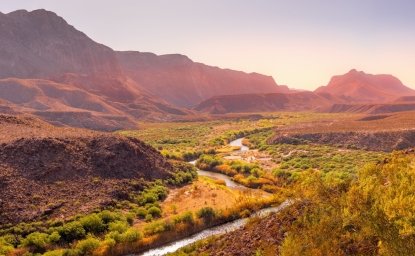
Water Security at the US-Mexico Border | Part 1: Background
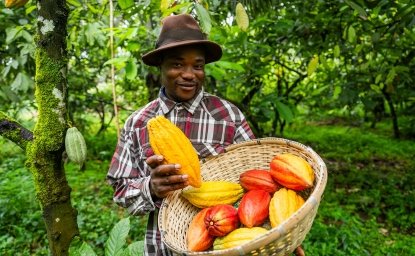
China and the Chocolate Factory
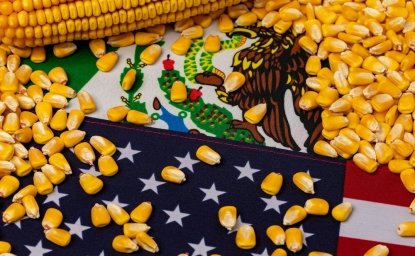
Ongoing Debate: The Prohibition of GMO Corn in Mexico

